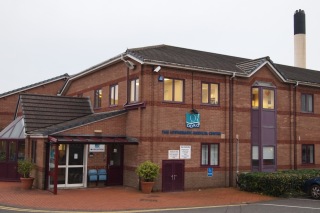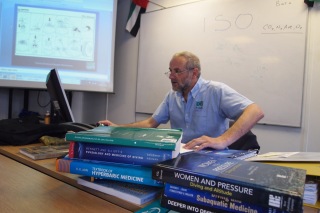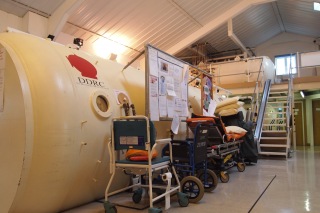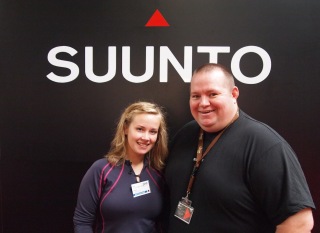After a taste of South African diving medicine I went to the UK for more. This time the Hyperbaric Medical Centre in Plymouth – maybe better known as the Diving Diseases Research Centre (DDRC). It is a charity founded 30 years ago to research the effects of the undersea environment on man. Even though we continuously develop technology and come up with fancier ways to survive underwater, we ARE designed to function at 1 atmosphere absolute, and that makes research in this field pretty cool.
However, I was invited not to develop the ultimate prevention of decompression illness, but to do the course in Basic Hyperbaric Medicine. We all have to start somewhere. The course was exciting in many ways – for one thing, it was actually the very first time ever that they arranged this course! Our instructor was Paul Dart, DDRC´s Training Manager, and he is one of the most enthusiastic and engaged instructors I have ever experienced.
Not only did I learn about the physiology and pathology of hyperbarics, I also got a thorough lesson in the history of hyperbarics and diving. It is eye opening when you come to understand that the diving industry is pretty young. Commercial diving as an industry has been a fact for about 50 years, and the recreational diving industry only about 30 years. This is very important since it is now we start to learn about the long-term effects of diving on the human body.
Another thing I found very interesting, and also important knowledge for the average diver is how the dive tables are developed. The DCIEM tables, for instance, were formulated using Doppler on ordinary people to detect bubbles, not like the US Navy tables, which are based on extremely fit, healthy males in their finest years. It is something you might want to consider when you are off to buy a diving computer – or when you choose which tables you use for your dive planning. The diving computers are really just a mathematical algorithm (I am sure the developers will hate me for putting it so bluntly), or ”a box of tricks” as Paul so elegantly put it, and treating them as an absolute truth can be fatal. After the course I checked which tables my Suunto Cobra 3 is based on – and I was thrilled (and a little bit relieved) to learn that it was the DCIEM tables. Thank you Suunto for not assuming I am an elite athlete!
After a busy week at the centre, I was off to DIVE 2010 in Birmingham. The dive show was buzzing, and it was fantastic to meet friends I have made during my adventures again. When you do a little bit of travelling you realize that the diving world is not really big. I also met with many of my sponsors, and had a valuable opportunity to thank them for supporting the Scholarship. Without our sponsors the Scholarship could not exist, and many, bright young people would never have the chance to pursue a career in an underwater field.




